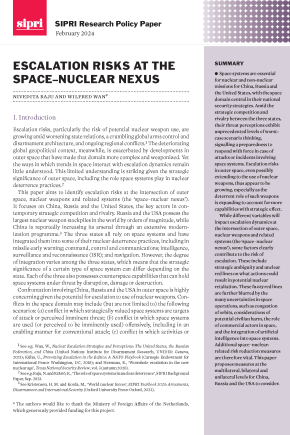Escalation Risks at the Space–Nuclear Nexus
Space systems are essential for nuclear and non-nuclear missions for China, Russia and the United States, with the space domain central in their national security strategies. Amid the strategic competition and rivalry between the three states, their threat perceptions exhibit unprecedented levels of worst-case scenario thinking, signalling a preparedness to respond with force in case of attacks or incidents involving space systems. Escalation risks in outer space, even possibly extending to the use of nuclear weapons, thus appear to be growing, especially as the deterrent role of such weapons is expanding to account for more capabilities with strategic effect.
While different variables will impact escalation dynamics at the intersection of outer space, nuclear weapons and related systems (the ‘space–nuclear nexus’), some factors clearly contribute to the risk of escalation. These include strategic ambiguity and unclear red lines on what actions could result in potential nuclear retaliation. These fuzzy red lines are further blurred by the many uncertainties in space operations, such as congestion of orbits, considerations of potential civilian harm, the role of commercial actors in space, and the integration of artificial intelligence into space systems. Additional space–nuclear-related risk reduction measures are therefore vital. This paper proposes measures at the multilateral, bilateral and unilateral levels for China, Russia and the USA to consider.
I. Introduction
II. Threat perceptions
III. Risk drivers
IV. Risk reduction
V. Conclusions


